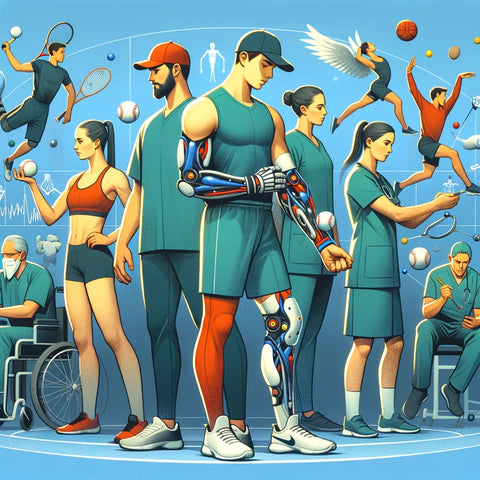Tackling the Arm Injury Epidemic in Sports: The Need for Proactive Solutions
Tackling the Arm Injury Epidemic in Sports: The Need for Proactive Solutions
In the realm of sports, particularly in baseball, football, softball, volleyball and any other intensive activities, the recurring issue of arm injuries has become an alarming trend. Each year, as the season kicks off, so does the surge in arm injuries among athletes. This concerning pattern begs the question: Why does this epidemic persist, and what can be done to address it?

Several factors contribute to the annual spike in arm injuries, with one of the primary culprits being inadequate preparation. Many athletes fail to adequately condition their bodies for the demands of their sport before diving into rigorous training or competition. This lack of preparation leaves their muscles, tendons, and ligaments vulnerable to strain and injury, particularly in the high-stress environment of competitive play.
Another critical aspect often overlooked is the absence of proper ramping-up programs for throwing. Without a gradual increase in intensity and workload, athletes subject their arms to sudden and excessive strain, increasing the risk of injury significantly. Implementing structured, progressive throwing programs can help mitigate this risk by allowing the body to adapt gradually to increased demands.
Furthermore, various practices within training regimens contribute to arm injuries. Fatigue plays a significant role, as overtraining, excessive use of weighted balls, heavy lifting, and long-distance running can all lead to muscle fatigue and compromised biomechanics, ultimately predisposing athletes to injury.
Moreover, individual factors such as physical limitations, growth spurts, and structural weaknesses also play a significant role in injury susceptibility. These factors underscore the complexity of the issue and emphasize the need for a multifaceted approach to injury prevention.
Addressing the arm injury epidemic requires a proactive strategy that targets the root causes of these injuries. One promising solution is the implementation of external methods to offload arm stress during athletic performance. The Kinetic Arm, for instance, has emerged as a revolutionary tool designed to stabilize the elbow and shoulder, effectively reducing dynamic arm stress while throwing and swinging.
Backed by data and published research, the kinetic arm sleeve has demonstrated its efficacy in mitigating arm injuries by providing support and stability without restricting movement. By redistributing forces away from vulnerable structures, such as the elbow and shoulder, this innovative device offers athletes a means to protect their arms and optimize performance safely.
In conclusion, the persistent rise in arm injuries among athletes demands urgent attention and proactive measures. While various factors contribute to this epidemic, including inadequate preparation, improper training protocols, and individual vulnerabilities, there is hope for change. By embracing innovative solutions like the Kinetic Arm and adopting comprehensive injury prevention strategies, we can safeguard the health and longevity of athletes, ensuring they can perform at their best while minimizing the risk of injury. It's time to tackle the arm injury with the kinetic arm brace epidemic head-on and prioritize the well-being of our athletes.


Leave a comment